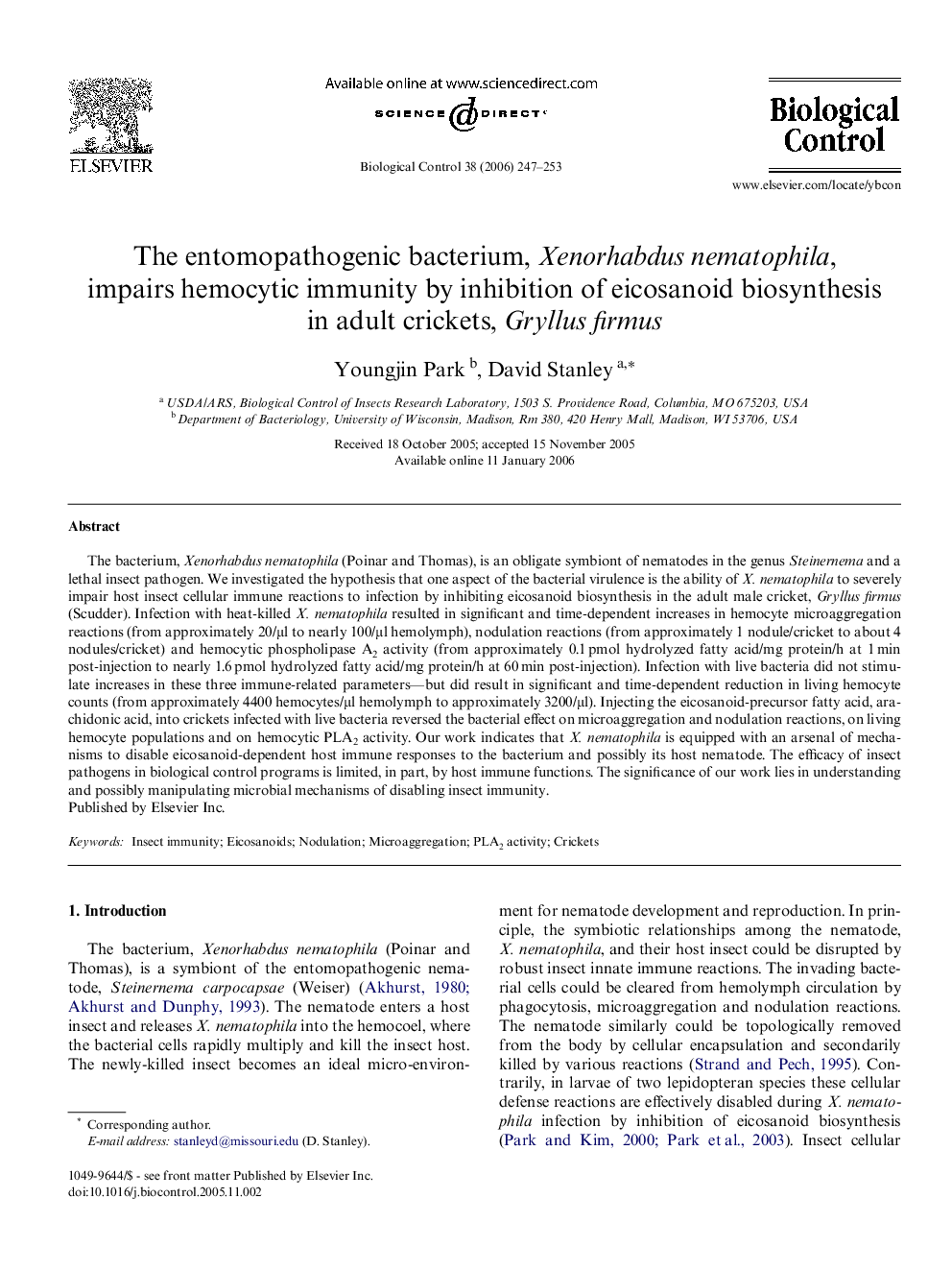| Article ID | Journal | Published Year | Pages | File Type |
|---|---|---|---|---|
| 4505328 | Biological Control | 2006 | 7 Pages |
Abstract
The bacterium, Xenorhabdus nematophila (Poinar and Thomas), is an obligate symbiont of nematodes in the genus Steinernema and a lethal insect pathogen. We investigated the hypothesis that one aspect of the bacterial virulence is the ability of X. nematophila to severely impair host insect cellular immune reactions to infection by inhibiting eicosanoid biosynthesis in the adult male cricket, Gryllus firmus (Scudder). Infection with heat-killed X. nematophila resulted in significant and time-dependent increases in hemocyte microaggregation reactions (from approximately 20/μl to nearly 100/μl hemolymph), nodulation reactions (from approximately 1 nodule/cricket to about 4 nodules/cricket) and hemocytic phospholipase A2 activity (from approximately 0.1 pmol hydrolyzed fatty acid/mg protein/h at 1 min post-injection to nearly 1.6 pmol hydrolyzed fatty acid/mg protein/h at 60 min post-injection). Infection with live bacteria did not stimulate increases in these three immune-related parameters-but did result in significant and time-dependent reduction in living hemocyte counts (from approximately 4400 hemocytes/μl hemolymph to approximately 3200/μl). Injecting the eicosanoid-precursor fatty acid, arachidonic acid, into crickets infected with live bacteria reversed the bacterial effect on microaggregation and nodulation reactions, on living hemocyte populations and on hemocytic PLA2 activity. Our work indicates that X. nematophila is equipped with an arsenal of mechanisms to disable eicosanoid-dependent host immune responses to the bacterium and possibly its host nematode. The efficacy of insect pathogens in biological control programs is limited, in part, by host immune functions. The significance of our work lies in understanding and possibly manipulating microbial mechanisms of disabling insect immunity.
Related Topics
Life Sciences
Agricultural and Biological Sciences
Agronomy and Crop Science
Authors
Youngjin Park, David Stanley,
